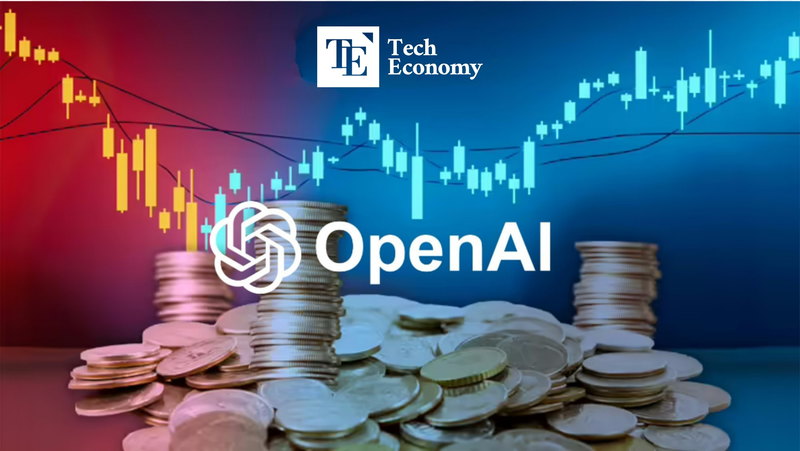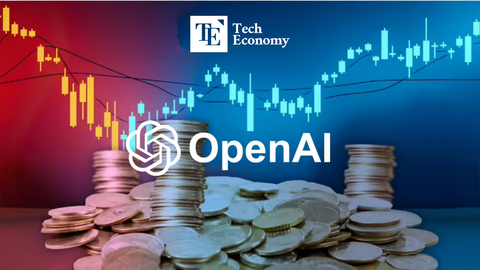OpenAI Posts Huge Losses Despite Soaring Sales, Raising Questions of an AI Bubble
Input
Modified
OpenAI Posts $7.8 Billion Operating Loss Despite Soaring Revenue “Only NVIDIA Is Truly Profitable in AI,” Bubble Fears Spread Amid Uncertainty, OpenAI’s New Service “Sora 2” Draws Polarized Reactions

OpenAI is struggling to improve profitability despite strong revenue growth in the first half of the year. Rising expenses—including research and development, server operations, and labor costs—are preventing the company from narrowing its losses. Most other AI firms face the same challenge of high-cost growth, fueling concerns in financial markets that an “AI bubble” could soon burst.
OpenAI Sinks Deeper Into Losses
According to Reuters and the Financial Times on the 1st (local time), OpenAI’s revenue in the first half of the year reached $4.3 billion, about 16% higher than its full-year revenue of $3.7 billion in 2024. Paid subscriptions, APIs, and enterprise solutions drove the rapid growth. However, costs rose even faster, pushing operating losses to nearly $7.8 billion.
The main driver of the deficit was R&D spending. OpenAI poured $6.7 billion into developing next-generation AI models and enhancing ChatGPT operations in just the first half of the year. Sales and marketing expenses surged to $2 billion, already more than double what was spent in all of 2024. The fierce industry-wide talent war also weighed heavily on finances, with OpenAI granting around $2.5 billion in stock-based compensation to retain and recruit key staff—almost double the amount from a year earlier.
These heavy expenditures led to $2.5 billion in net cash outflows during the first half. Still, the company held about $17.5 billion in cash and securities as of mid-2025, leaving no immediate risk to operations. OpenAI has set its full-year 2025 revenue target at $13 billion while aiming to cap annual cash burn at around $8.5 billion.
Talk of an AI Bubble Grows Louder
The struggle to generate profits in line with soaring costs is not unique to OpenAI—it is increasingly seen as a systemic issue across the global AI industry. Despite massive investment flows, very few companies are posting meaningful earnings. Major Big Tech firms plan to invest a combined $750 billion in AI data centers during 2024–2025, while worldwide AI investment is expected to reach $3 trillion by 2029. Yet at present, the only company consistently showing significant profitability is NVIDIA, thanks to surging GPU sales.
This has prompted warnings from financial markets that an “AI bubble” may soon burst. Deutsche Bank recently argued that the current surge in AI investment cannot continue indefinitely. While the AI boom has helped prop up the U.S. economy against recession risks, growth will not be sustainable if capital spending plateaus. Some analysts warn that if hyperscalers (large-scale data center operators providing cloud services) cut back AI spending sharply and return to 2022 levels, projected revenue growth for S&P 500 companies next year could fall by as much as 30%.
Circular investment flows between companies are another concern. Critics point to a cycle in which major AI firms engage in massive deals with each other, effectively recycling capital to prop up stock prices. For instance, NVIDIA recently announced a $100 billion investment in OpenAI, shortly after OpenAI signed a $300 billion cloud computing contract with Oracle. Oracle, a key customer of NVIDIA, spends tens of billions on its chips—meaning the money flows from Oracle to NVIDIA, from NVIDIA to OpenAI, and then back to Oracle through cloud contracts.
Such arrangements, where customers become investors and investors become customers, echo patterns seen during the dot-com bubble. Back then, telecom equipment makers like Cisco, Nortel, and Lucent extended direct financing to their clients to encourage aggressive equipment purchases. This fueled both the bubble’s rapid expansion and its collapse, leaving the market reeling from oversupply and a wave of bad debt.

Can Sora 2 Be a Turning Point?
To counter growing market risks, OpenAI has been rolling out new services aimed at boosting revenue. On the 1st, the company launched Sora 2, an AI-driven social app built on its video generation technology. Users welcomed the feature that allows them to record themselves and create AI-generated videos, with invite codes selling on eBay for $11 to $45. Business Insider praised the app, saying, “If Meta’s video-generation app churns out boring AI leftovers, Sora 2—centered on users themselves—is surprisingly fun.”
Yet criticism has mounted over ethical concerns such as deepfakes and copyright infringement. Already, Sora 2 has been flooded with videos misusing politicians, celebrities, and popular IP. While OpenAI has said it blocks depictions of public figures, no safeguards exist against deepfake content featuring private individuals.
This controversy has fueled accusations that OpenAI is straying from its mission of “advancing humanity with AI.” On the day after launch, tech reviewer Lanner Tushar criticized CEO Sam Altman, pointing to his recent remark that curing cancer with AI would require “$7 trillion and 10 gigawatts of power.” Tushar wrote, “Instead, OpenAI is now releasing AI junk videos for personalized ads.” Altman personally replied, arguing that substantial capital is necessary to build science-capable AI and direct research toward AGI.





















Comment